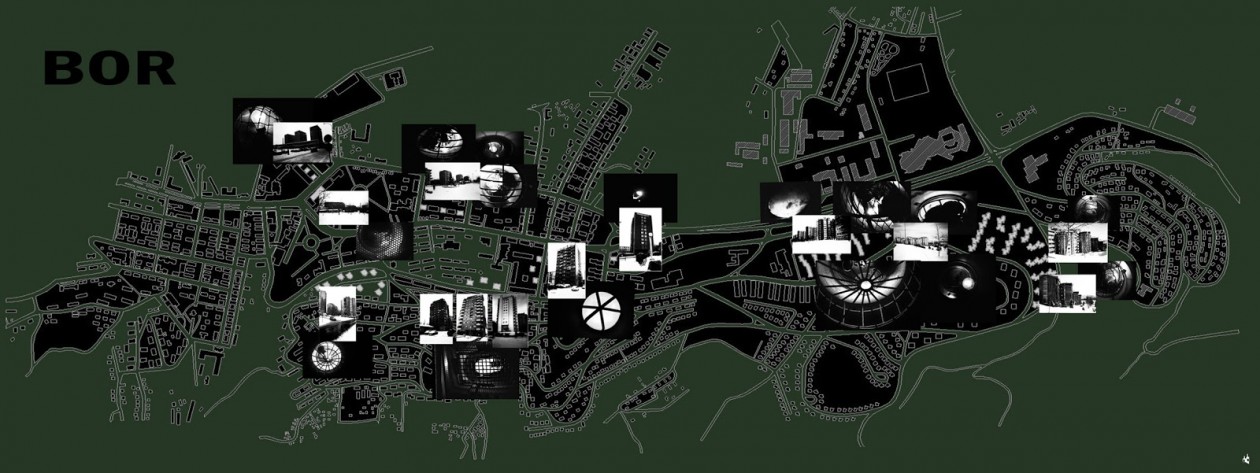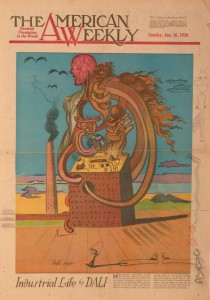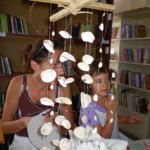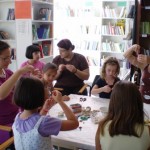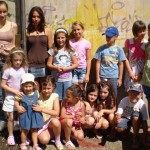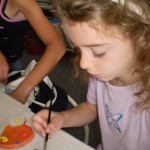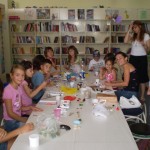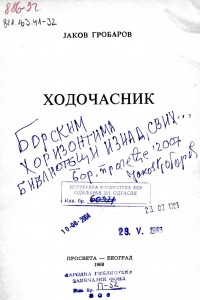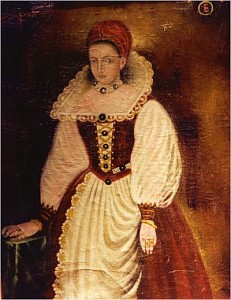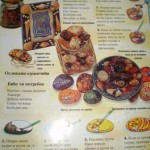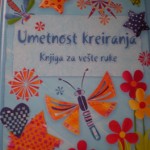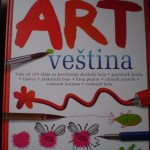Због финансијских проблема, Народна библиотека Бор неће бити у могућности да ове године распише свој традиционални конкурс за необјављену кратку причу. Надамо се да ћемо следеће године бити у могућности да наставимо да награђујемо писце кратких прича.
Kolekcija Marinko Sudac
Uskoro u Narodnoj biblioteci Bor
Edukativni program upoznavanja sa najznacajnijim zavicajnim licnostima
Zoran Paunovic
USKORO u biblioteci i borskim bioskopima! from adam krug on Vimeo.
Жаркина летња радионица
Дечје одељење Народне библиотека организовало је од 24-26. августа креативну радионицу за ???????? ?????? децу. Радови настали коришћењем каменчића и шкољки инспирисани су летњим мотивима.
Изложба је постављена на Информативном одељењу библиотеке.
Jakov Grobarov, Hodočasnik
КРСТИО БИХ ЈАРИЋЕ
Зовем се Гробаров. Представљам се ради формалности. Иначе, можете ме пронаћи у сваком дрвету које листа.
А знате где не можете да ме пронађете? Рећи ћу вам и то. Не можете да ме пронађете у предузећу за дребанком, на факултету пред шалтером за оверавање семестара, на седници радничког савета, или на неком партијском састанку. А ја то желим. Можда желим из дна душе.
Пре неки дан дошао сам једноме од вас (можда сте то баш ви били) у установу да тражим посао. Ви сте ме понудили да седнем, а онда сте ме упитали:
— Дакле, ви хоћете да радите, зар не?
— Да — реокох — морам да радим, да се ангажујем, да се укључим у друштво, пошто не желим више да ме сматрате (ви) некорисним човеком.
— Лепо је то од вас. Само, ја мислим да ви нећете да радите. Знам ја вас.
— Али, молим вас — усиротивих се.
— Да, да, нећете! — прекиде ме један од вас. — Волите ви кафану.
— Хоћу да радим! — био сам упоран.
— Нећете!
— Хоћу!
— Нећете!
— Хоћу!
Уто зазвони телефон и један од вас ми пружи руку извињавајући се што је заузет и рече ми да поново навратим. Изиђох на улицу.
Стајао сам, неодлучан, неко време, кад ме неко ухвати за руку. Моја пријатељица Вера, сва бесна, иде да баци на главу неком посластичару колаче јер су покварени.
— А после подне — рече ми Вера када смо се поздрављали — идем код једне старице да ми гледа у шољу. Одлично гледа.
Замакла је за угао а ја сам полако кренуо низ улицу. Чинило ми се да иза сваког завијутка чујем глас. Разговетан глас.
— Гробарове, ти си нас разочарао. Покораваш се, је ли? Хоћеш да ставиш машну и шешир. Нисмо знали да си кукавица, да ћеш да поклекнеш, да се предаш.
Побегао сам у кафану, и стао да пијем.
Пред вече је наишао мој познаник и пришао мом столу.
— Опет пијеш? — упитао ме је.
— Опет! — рекох.
— Ама што се већ једном не оканеш тога и не почнеш нешто да радиш. Ти си млад, здрав. Имаш ти још наде.
— Нећу да радим! — вриснух.
— Мораш да радиш!
— Нећу!
— Хоћеш!
— Нећу!
Сутрадан сам играо коло с бригадирима са аутопута. Играо сам лудачки. Кроз тело ми је пролазила некаква струја: пријатна и патриотска. После је почела да пада киша и ми смо се разишли. Ја сам опет пошао у кафану и тамо плакао, а неки од вас су ме тешили. Можда сте то били ви. Следећег дана сам у једном листу прочитао оглас: „Крстио бих јариће“, а потпис је био: ,,Јаков Гробаров.“
Јаков Гробаров, Ходочасник, 1968. стр. 67 – 68.
Bor – nulti kilometar
ПЕРИОДИКА: сајт Б92, 11. август 2010, 8:30 минута – ПРОБЛЕМИ СА ПРОСТОРОМ
На сајту Б92 можете прочитати вест под називом „Кад професори бацају књиге“. Професор Љубиша Рајић, са катедре за скандинавистику Филолошког факултета у Београду, говори о томе како је морао да одбије вредан поклон у књигама јер у библиотеци департмана за књиге нема места. Књиге и часописи се и иначе избацују из те библиотеке, а слично је стање у већини универзитетских библиотека у земљи. Вест погледајте овде:
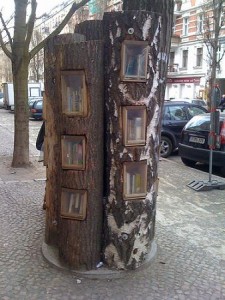
http://www.b92.net/info/vesti/index.php?yyyy=2010&mm=08&dd=11&nav_category=206&nav_id=451099
ПЕРИОДИКА: КУЛТУРА. УМЕТНОСТ. НАУКА. Додатак ПОЛИТИКЕ, субота 7. август
У овом броју додатка можете прочитати и полемички текст Станка Црнобрње „НАЦИОНАЛНО БЛАГО НА КАЛЕМЕГДАНУ, ТЕСЛИН МУЗЕЈ НА ТРГУ“. Народни музеј Србије већ неколико година је затворен. Од првобитне идеје реконструкције одустало се. Архитекте сада прелажу да се музеј прошири укопавањем испод Трга републике. Проблем је са зградом, која је некада била здање у којем се налазила Хипотекарна банка, а потом, од 1952. године, музеј. Прва реконструкција музеја била је 1966. године. Зграда је, дакле, одувек била проблем, јер није ни била грађена за потребе музеја. Црнобрња критикује идеју укопавања као погрешну и анахрону, поред тога и скупу. Он предлаже јефтиније решење – градњу нове зграде музеја на Калемегдану, који би тако постао својеврсна зона музеја. Нова зграда би по свим стандардима музеологије испунила своју фукнцију. У актуелно здање уселио би се Музеј Николе Тесле. 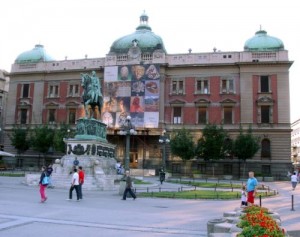 Стална поставка музеја затворена је 1. јуна 2003. године. Поред тога што су експонати склоњени од очију јавности, музеј троши огроман новац за плаћање њиховог смештаја у другим објектима. Депои музеја су руинирани.
Стална поставка музеја затворена је 1. јуна 2003. године. Поред тога што су експонати склоњени од очију јавности, музеј троши огроман новац за плаћање њиховог смештаја у другим објектима. Депои музеја су руинирани.
ПЕРИОДИКА: часопис ИСТОРИЈА, август 2010. Ержебет Батори
У овом броју можете прочитати чланак о Ержебет Батори, крвожедној грофици која је убијала девојке и децу у својем замку крај Братиславе. Шта се налази у међупростору између легенде и стварности? Има ли у тој причи фалсификата из пoлитичких побуда, или је ова прича једна од оних које упозоравају на садистичке слојеве у људским бићима?
Жаркина креативна радионица у августу
Жаркина креативна радионица одржаће се 24-26. августа од 10:00 до 13:00 часова на Дечјем одељењу. Намењена је члановима свих узраста који желе да се друже али истовремено и да покажу своју маш
У радионици ће бити представљене књиге и приручници који се баве уметношћу креирања и ликовним вештинама.
За ову радионицу потребно је понети следећи материјал :
– шкољкице, каменчиће и гранчице
– маказе и лепак
– водене и темпера боје
– картон
Сви радови биће изложени на Дечјем одељењу.
Добродошли!
